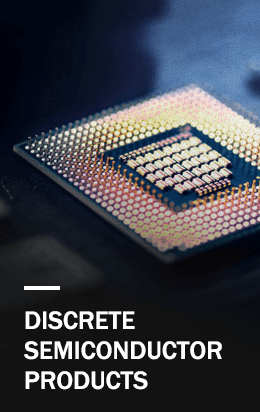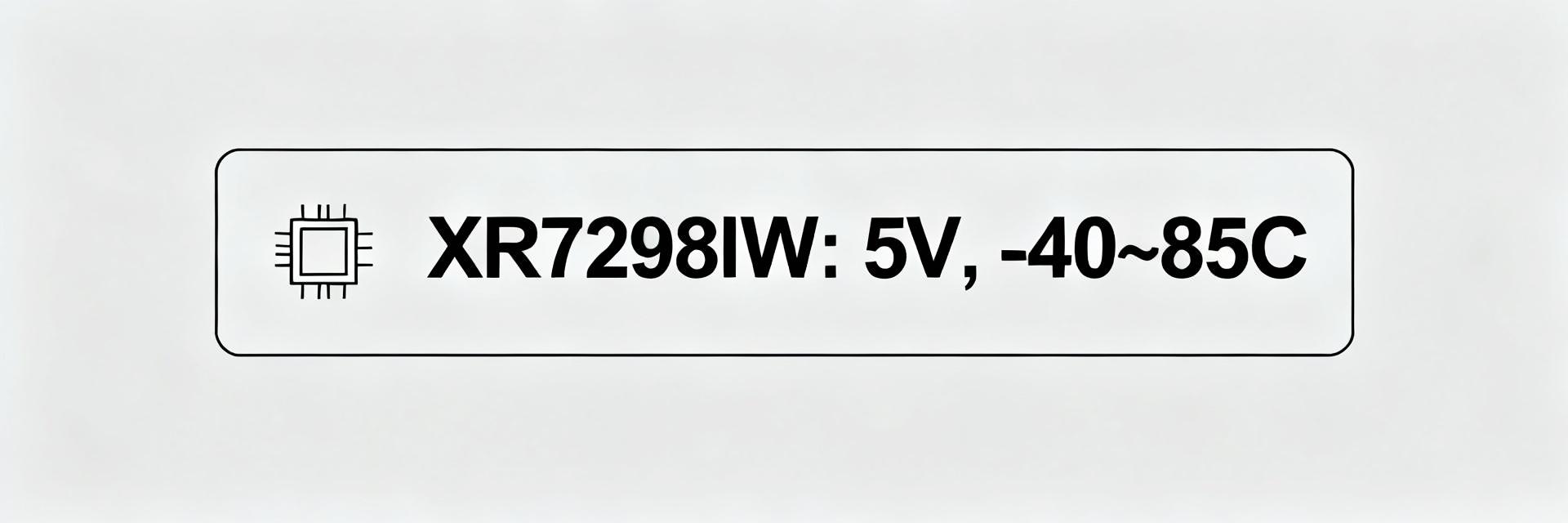Industry reports show that footprint or pinout mistakes cause up to 30% of PCB re-spins and assembly delays. This article explains why a focused datasheet checklist prevents costly rework and accelerates time-to-market by giving you concrete verification steps for the DSIC03LSGET and its datasheet. The purpose is practical and actionablea step-by-step checklist designers and purchasers can use to verify package details, pinout orientation, and the PCB land pattern before layout and assembly.
PointA concise, data-driven pre-check reduces surprises in procurement and manufacturing. Evidencemultiple commercial assembly houses cite incorrect footprints and ambiguous pinouts as leading causes of first-article failures. Explanationyou’ll get prioritized checks that map datasheet dimensions and tolerances into CAD constraints, create verified footprints, and define a pre-production test plan that minimizes iterations.
1 — Product overview & package baseline (Background)
PointStart by establishing the package baseline—its family, common variants, and suffix meanings. Evidencemanufacturer part strings and variant suffixes indicate mechanical differences (lead finish, pin count, orientation). Explanationfor the DSIC03LSGET, confirm the exact package string on the component label and BOM so you don’t mix families; a mismatch between a similar suffix can change pad size or thermal requirements and create late re-spins.
1.1 Package family & common variants
PointIdentify the package family and any manufacturer variants before footprint work. Evidenceparts with similar prefixes often share body outline but differ in plating or internal construction. Explanationverify the part marking against your PO and request the official datasheet PDF or vendor drawing; search the datasheet for the phrase “package dimensions” and compare reference images to confirm the correct package variant before extracting pad geometry, because a different variant can shift pad-to-pad spacing or body tolerance.
1.2 Key electrical & mechanical specs to note first
PointCapture must-check specs earlyvoltage/current ratings, contact resistance, insulation, operating temperature, and material/plating. Evidencethese specs determine dielectric clearance, pad metallurgy, and solderability. Explanationnote units in both imperial and metric for US production communications—e.g., 2.54 mm (0.100") pitch—so you and your contract manufacturer share the same dimensional expectations. Each electrical spec maps to constraintshigh current requires larger copper area and thicker pads; high temperature rating impacts reflow profile choice.
1.3 Typical failure modes tied to package mistakes
PointCommon failure modes include misplaced pads, wrong pad size, and silkscreen interference. Evidenceassembly reports routinely list solder bridging, tombstoning, and poor wetting traced to incorrect land patterns. Explanationmitigate with quick remedies—adhere to IPC footprint guidance (IPC‑7351B or equivalent) and request vendor-provided footprint files or recommended pad geometry. When in doubt, use the datasheet max dimensions for clearance and consult your assembler for pad paste percentages.
2 — Datasheet deep-divedimensions & tolerances (Data analysis)
PointAccurate dimension extraction is the foundation for a reliable PCB land pattern. Evidenceambiguous or overlooked notes in dimension tables lead to misplaced pads and mechanical interference. Explanationparse dimension tables carefully, capture min/typ/max values, and convert tolerances into CAD DRC constraints so that your footprint generation uses conservative clearances and prevents late mechanical clashes.
2.1 Extracting critical dimension tables
PointExtract pin pitch, pad-to-pad spacing, body length/width/height, and lead shape. Evidencethese geometric items define pad geometry and courtyard. Explanationrecord min/typ/max values and default to max-body and max-lead extents when defining keepouts and component courtyard. For example, use pin pitch and pad-to-pad spacing to compute pad center coordinates; verify pad length against recommended land pattern callouts in the datasheet to set pad size and shape.
2.2 Interpreting tolerances & notes
PointTolerance callouts and general notes (e.g., “unless otherwise specified”) change how you use table values. Evidencedatum references and footnote symbols can shift critical dimensions. Explanationtranslate table tolerances into CAD constraints (min pad clearance, maximum component body extents). If a dimension is listed as 2.54 ±0.05 mm, set your DRC to allow the component at the ± tolerance extremes; treat tolerance notes as drivers for assembly clearance and silkscreen offsets.
2.3 Verifying 3D model and mechanical fit
PointA validated 3D STEP model prevents enclosure and placement surprises. Evidencemechanical interference is a common late-stage failure when 3D checks are skipped. Explanationobtain or build a STEP model from datasheet dimensions, check component height against enclosure keepouts and pick-and-place nozzle clearance, and include the 3D model in your ECAD so MCAD/ECAD integration flags any collisions before release.
3 — Pinout mapping & functional verification (Method / Data)
PointConfirm pin numbering and orientation to avoid functional failures. Evidencemisoriented parts or swapped power/ground pins can destroy devices or boards. Explanationcross-compare symbol, mechanical drawing, and the recommended PCB footprint to ensure the numbered pins in the schematic symbol map identically to the footprint pads in the PCB editor.
3.1 Confirming pin numbering & orientation
PointVerify pin‑1 markers and orientation marks using all datasheet views. Evidencedatasheets show top and bottom views that must be reconciled with schematic symbols. Explanationuse three-way verification—symbol pin numbering, mechanical drawing orientation, and the footprint silk/top view—so you confirm pin 1 location, body chamfers, or notch markers. Document orientation in assembly notes and on the silkscreen if helpful to the assembler.
3.2 Functional pin assignments & electrical constraints
PointMap power, ground, signals, and NC pins and capture routing requirements. Evidencedatasheet functional tables and electrical characteristics specify which pins need isolation or special routing. Explanationidentify pins that need keepouts, ESD protection, or controlled-impedance routing (differential pairs). For pads connected to ground or thermal pads, plan copper pour ties and thermal vias to meet both electrical and solderability goals.
3.3 Common pinout pitfalls & verification checklist
PointRun a concise pinout verification checklist. Evidencerecurring issues include NC handling, thermal pad miswiring, and lack of test access. Explanationverify NC treatment (do not route or tie unless the datasheet authorizes), map thermal pad requirements, ensure test pins or programming pads are accessible, and plan a first‑article electrical testcontinuity, shorts, and basic powering procedures before full assembly.
4 — Footprint & land pattern creation (Method / How-to)
PointFootprint creation translates datasheet geometry into pad shapes, paste rules, and silkscreen. EvidenceIPC‑aligned land patterns reduce solder defects and improve assembly yield. Explanationderive pad geometry from datasheet dimensions, apply paste aperture recommendations, and ensure silkscreen and courtyard avoid pad solder areas to prevent contamination or misplacement during reflow.
4.1 Pad geometry, solder mask, and paste layer rules
PointDefine pad shape, pad size, and paste aperture percentages explicitly. Evidenceimproper paste amounts cause tombstoning and insufficient fillets. Explanationuse recommended pad sizes from the datasheet or IPC table; for SMD leads, set paste aperture to 60–85% of the pad area as a starting point and adjust based on assembly house feedback. Ensure silkscreen is offset from pads and courtyard reflects max component extents.
4.2 Thermal & mechanical considerations
PointIf the package includes thermal pads or tabs, plan via strategy and copper tie patterns. Evidencethermal pads without adequate vias or reliefs cause poor solder joint formation or thermal imbalance. Explanationspecify via diameter, via count, and via tenting rules; use thermal relief or spoke patterns for manual rework capability and coordinate with your assembler on via plating process for reliable solder wicking control.
4.3 Producing and validating footprint files
PointValidate footprints in your ECAD workflow using DRC and 3D overlays. Evidencecross-tool inconsistencies (units, origin points) create shifted footprints. Explanationimport measured dimensions, run DRC against your CAD ruleset, attach the 3D model to the footprint, and export Gerbers for overlay comparison. Send footprints to your assembly house for sign-off before releasing fabrication files.
5 — Verification, testing & pre-production checklist (Case study → Action)
PointA formal pre-production checklist and test plan prevent assembly surprises. Evidencestructured first-article checks reduce iterative runs. Explanationuse a staged verification path—pre-layout confirmation, post-layout DRC and assembly review, then sample assembly and electrical verification—so you catch mechanical, soldering, and functional issues before full production.
5.1 Pre-layout verification steps
PointComplete critical verifications before committing to layout. Evidenceparts measured off reel or samples often reveal deviations from nominal datasheet values. Explanationconfirm datasheet version, measure sample parts dimensionally, confirm pad geometry with the BOM item, and verify pick-and-place nozzle compatibility. Sign off these items with supplier or internal QA to establish traceability before layout.
5.2 Assembly & reflow test plan
PointDefine assembly tests and acceptance criteria for the first article. Evidenceoven profile verification and solder fillet inspection catch thermal or paste distribution issues early. Explanationrun a sample board with a validated reflow profile, inspect solder fillets visually and by X‑ray where joints are hidden, and apply acceptance criteria (wetting, fillet shape, absence of bridging). Document rework steps and when to trigger a board re-spin.
5.3 Supplier & manufacturing handoff notes
PointCommunicate precise handoff documentation to your BOM and manufacturer. Evidencemissing footprint sources or ambiguous orientation notes lead to mis-assembly. Explanationinclude footprint source, attached 3D model, orientation marks, paste layers, and explicit notes such as “Do not invert” in BOM and Fab/Assembly notes; request manufacturer confirmation on SLA items like lead finish, reel orientation, and minimum order quantities.
6 — Quick-reference checklist & troubleshooting guide (Action recommendations)
PointProvide a printable on-board checklist and immediate mitigation steps for common failures. Evidencerapid triage reduces downtime on assembly lines. Explanationsegregate mandatory checks (datasheet version, pad geometry accuracy) from recommended checks (3D model fit, silkscreen clarity) and provide clear escalation steps if issues are found during assembly.
6.1 One-page printable DSIC03LSGET checklist
PointProduce a one-page checklist grouped by datasheet, mechanical dims, pinout, footprint, paste/mask rules, and testing. Evidencesingle-page checklists improve compliance during handoffs. Explanationmark items as mandatory (e.g., confirm datasheet revision, pad size on CAD) versus recommended (3D model validation). Keep the checklist with release documentation and the BOM so assemblers can refer to it at intake.
6.2 Troubleshooting FAQ for common issues
PointProvide quick Q&A for immediate fixes when problems surface. Evidencecommon scenarios include wrong footprint, misaligned pads, tombstoning, and insufficient paste. Explanationimmediate mitigations include halting the run, performing a focused visual/X‑ray inspection, adjusting paste aperture or reflow profile, and scheduling a re-spin only after root-cause verification. Document findings and corrective actions for continuous improvement.
6.3 Long-tail keywords & SEO placement plan
PointFor published content, place long-tail phrases naturally in headings, lead paragraphs, and image alt text to aid discovery. Evidencestrategic placement in the first 100 words and in descriptive alt text improves search relevance. Explanationincorporate phrases such as “DSIC03LSGET footprint dimensions” or “DSIC03LSGET pin numbering” into captions and metadata while keeping technical accuracy so readers and search engines find the content without sacrificing clarity.
Summary
Verify datasheet dimensions and tolerances by extracting min/typ/max values and translating them into CAD DRC constraints; using the max extents for clearances reduces mechanical interference risk and informs pad size and pad placement decisions for the DSIC03LSGET.
Confirm pinout orientation and functional assignments by cross-referencing symbol, mechanical drawing, and recommended footprint; document NC handling, thermal pad connections, and any ESD or controlled-impedance routing requirements.
Create an IPC-aligned footprint with appropriate pad geometry, paste aperture, and silkscreen clearance; validate with a 3D model and obtain assembler sign-off to avoid re-spins.
Run the pre-production checklist and assembly tests—oven profile validation, visual/X-ray inspection, and first-article electrical checks—to catch solderability or functional issues before full production.
Frequently Asked Questions
1 — How do I treat NC pins when creating a footprint or routing board for this datasheet?
PointTreat NC pins cautiously. Evidencedatasheets sometimes change NC status between revisions. Explanationdo not connect NC pins unless the datasheet explicitly permits tying them to a net; leave them unconnected or mask them out in the footprint. If the assembler requests NC ties for stability, document that change and confirm the electrical impact with the component supplier.
2 — What pad size and paste percentage should I start with when implementing the PCB land pattern?
PointStart from datasheet recommendations or IPC guidance. Evidencepaste volume typically correlates with pad size and component mass. Explanationuse the datasheet‑recommended pad geometry when present; otherwise follow IPC‑7351B guidance. For paste, begin around 60–80% aperture coverage for typical SMD pads and adjust after a sample reflow test; document results and iterate with your assembler.
3 — If I discover a footprint error after assembly, what immediate steps should I take?
PointRapid triage minimizes scrap. Evidenceimmediate inspection can distinguish assembly process issues from footprint design faults. Explanationhalt production, sample-inspect affected boards (visual and X‑ray where needed), isolate root cause (footprint vs. process), and implement containment (adjust paste stencils, local rework) while preparing a controlled re-spin if the footprint is at fault. Record corrective actions and update the checklist for future runs.




































